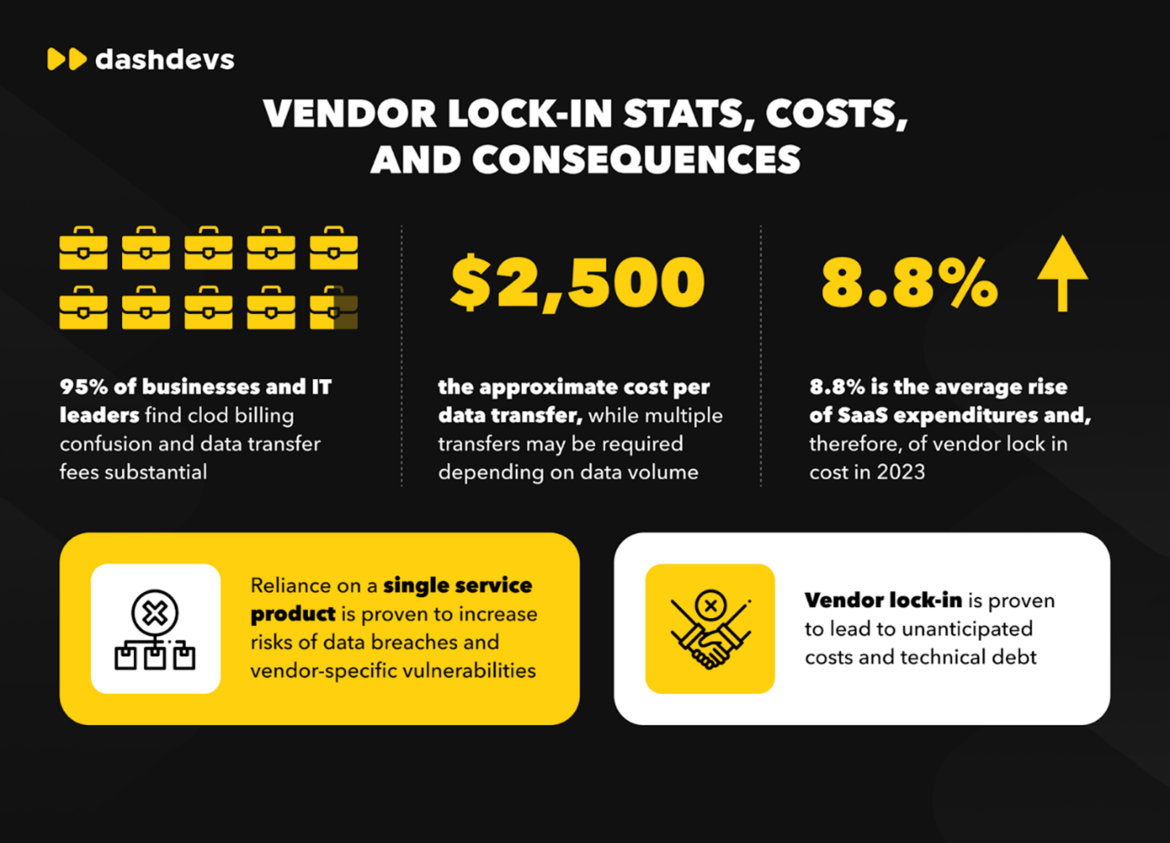The Hidden Trap of Vendor Lock-in: How MSPs Can Escape With Hybrid IT
Thomas Amberg from Ynvolve reveals how MSPs can escape vendor lock-in and enhance flexibility by adopting a hybrid IT strategy that combines new & circular hardware.

©metamorworks | istockphoto.com
For many MSPs, vendor lock-in can feel like a trap. Committing to a single vendor for your hardware, software, or cloud services might seem convenient or economical at first, but it often results in restrictive contracts, high costs, and limited flexibility. As your business grows and technology evolves, being stuck with a single vendor can stifle innovation, hinder scalability, and limit your ability to adapt to new challenges.
In this article, we’ll explore how a hybrid approach, which combines both circular and new hardware solutions, can help you avoid vendor lock-in while maintaining flexibility and control over your IT infrastructure. By adopting a fit-for-purpose strategy, you can optimize costs, enhance performance, and scale your operations effectively—all without being tethered to a single provider.
What is vendor lock-in, and why is it a problem?
Vendor lock-in occurs when a company becomes dependent on a single vendor for its IT needs, making it difficult or costly to switch to another provider. This dependency can arise from various factors, such as proprietary technology, contractual obligations, unique data formats, skill and knowledge dependencies, or the complexity and cost of migrating to an alternative solution. The result? You’re stuck paying for products and services that may no longer align with your business needs.
For MSPs, vendor lock-in can be particularly problematic. Your clients rely on you to provide flexible, cost-effective, and scalable solutions. When you’re locked into a single vendor’s ecosystem, it limits your ability to offer diverse options, negotiate better pricing, or quickly adapt to changing client requirements. This lack of flexibility can ultimately impact your competitive edge in the market.

The benefits of a hybrid approach
A hybrid approach to your IT infrastructure—one that combines both new and circular hardware—offers several advantages that can help mitigate the risks of vendor lock-in.
1. Flexibility and adaptability
One of the primary benefits of a hybrid solution is the ability to choose the right hardware for the right job. That’s what we like to call a fit-for-purpose approach. This not only reduces costs but also provides the flexibility to mix and match hardware based on your specific needs.
Meanwhile, new hardware can be integrated into the same environment for tasks that require cutting-edge performance or compliance with the latest security standards. This approach ensures that your infrastructure is not only cost-effective but also adaptable to a variety of workloads and business requirements.
2. Cost optimization
Vendor lock-in often comes with inflated costs, whether through high renewal fees, additional licenses, or hidden costs for upgrades and maintenance. By adopting a hybrid model, you can significantly reduce your total cost of ownership. Circular hardware offers a budget-friendly alternative to brand-new equipment, with equally good performance, allowing you to allocate resources more strategically.
Additionally, using a combination of circular and new hardware helps you avoid over-investing in high-end equipment for all workloads. This fit-for-purpose approach means you’re only paying for what you truly need, optimizing your IT budget and freeing up funds for other business priorities. According to our calculations, you can save up to 80% on your infrastructure costs.
3. Reduced environmental impact
Sustainability is becoming an increasingly important consideration for businesses worldwide. Circular IT solutions extend the life cycle of hardware, reducing electronic waste and minimizing the environmental footprint of your data center operations. By integrating circular equipment into your infrastructure, you’re not only saving money but also supporting your company’s sustainability goals.
This commitment to sustainability can be a differentiator for your MSP, appealing to clients who prioritize environmentally responsible business practices. It’s a win-win scenario: you gain cost-effective, reliable hardware, and your clients see your dedication to sustainable practices (which are becoming more and more important for them).
How to implement a hybrid IT strategy
Implementing a hybrid IT strategy that combines new and circular hardware requires careful planning and consideration. Here are some key steps to get started:
1. Assess your current infrastructure needs
Begin by evaluating your existing IT environment to identify areas where a hybrid approach can be most effective. Determine which workloads can be supported by circular hardware and which require the performance and security of new equipment.
2. Choose the right partners
Partnering with the right providers is crucial for a successful hybrid strategy. Look for vendors who specialize in circular IT and can offer high-quality equipment that meets your standards. These partners should also be able to provide ongoing support and maintenance for both new and circular hardware. The good news is that we have been in the circular business for more than 15 years, so you can rely on us if you decide to go this way.
3. Develop a migration plan
If you’re transitioning from a single-vendor environment, develop a detailed migration plan that outlines the steps needed to integrate new and circular hardware into your existing infrastructure. This plan should include a timeline, resource allocation, and risk mitigation strategies to ensure a smooth transition.
4. Implement fit-for-purpose policies
To maximize the benefits of a hybrid approach, establish fit-for-purpose policies that dictate which types of hardware are used for specific workloads. This will help you avoid over-provisioning and ensure that each component of your infrastructure is utilized to its fullest potential.
How hybrid solutions support long-term success
Avoiding vendor lock-in is not just about maintaining flexibility—it’s about setting your business up for long-term success. You will gain the freedom to choose the best solutions for your needs, optimize costs, and ensure that your infrastructure can evolve with your business.
For MSPs, this approach can be a game-changer. You’re no longer constrained by the limitations of a single vendor, allowing you to provide more tailored, effective solutions to your clients. With the right mix of new and circular hardware, you can build a resilient, adaptable IT environment that supports your growth and innovation.
The ability to stay agile and resourceful is invaluable. A hybrid approach to IT infrastructure empowers you to do just that—without sacrificing performance, cost-efficiency, or sustainability. Feel free to contact our team of experts. We can guide you from A to Z and provide top-notch support along the way for all your infrastructure needs.
Born and raised in southern Germany, Thomas Amberg is a European at heart. He combines an international mindset with his practical and dynamic approach to life. Studying and living abroad in the Netherlands and Denmark taught him to be adaptable and culturally aware. Now responsible for the development of DACH markets, he is also a passionate handball player.
Please note: The opinions expressed in Industry Insights published by dotmagazine are the author’s or interview partner’s own and do not necessarily reflect the view of the publisher, eco – Association of the Internet Industry.





